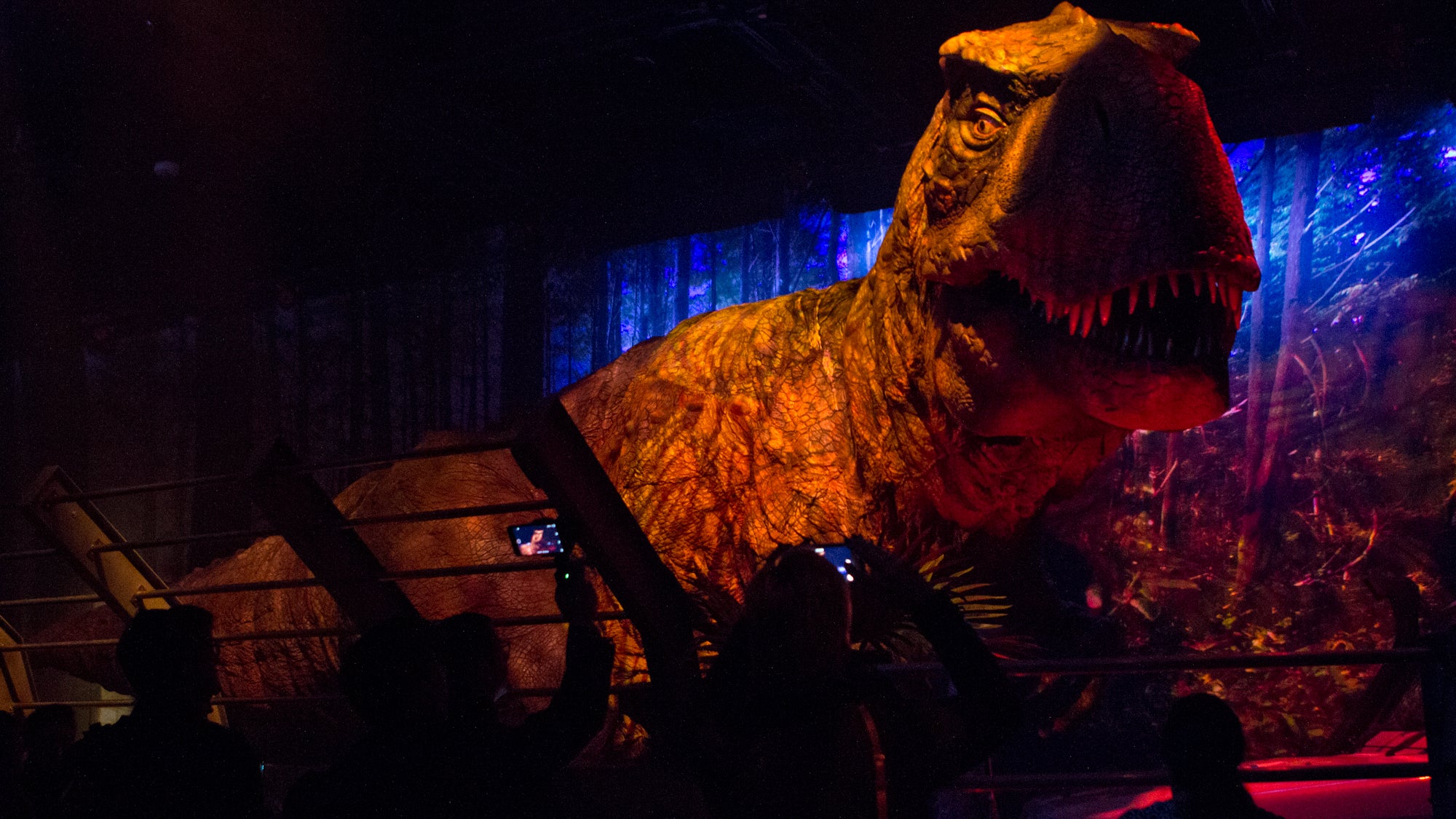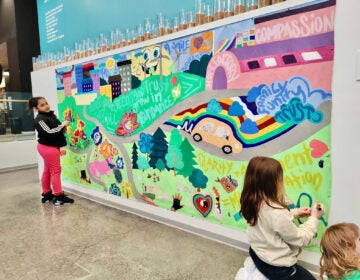Jurassic World has blockbuster opening weekend at Franklin Institute [photos]

The Tyrannosaurus Rex emerges at the Jurassic World exhibit at the Franklin Institute. (Kimberly Paynter/WHYY)
What beats out King Tut, Star Wars, and dissected human bodies preserved in plastic?
Dinosaurs.
“Jurassic World,” the museum exhibition, opened on Thanksgiving weekend at the Franklin Institute. It was the biggest opening weekend in the Institute’s 192-year history.
Thirteen thousand kids and their parents went to the Franklin Institute over the weekend to see the immersive exhibition that re-creates the fictional narrative of “Jurassic World” – the movie – about an island resort theme park populated with biologically engineered dinosaurs. The museum exhibition features theatrical lighting and dramatic music, even a narrative arc full of suspense and conflict – just like the movie.
The dinosaurs move and roar by sophisticated animatronics making them as life-like as possible. They were created by Creature Technology, the Australian company that created the popular “Walking With Dinosaurs” arena show.
“The important pieces for us were to have a real-world experience, like you’re in Jurassic World,” said Tom Zaller, president of Imagine Exhibitions, which produced the traveling show. “To put you in that place, use these amazing dinosaurs, and use the best science available to us right now.”
To get the best current dinosaur science, Zaller tapped the same paleontologist who consulted on the Jurassic Park films – Dr Jack Horner. Despite the exhibition’s emphasis on spectacle, he said he was able to pack in more real science than the movie had.
Like, did you know the stegosaurus keeps a reservoir of sugar in its hip for when its nervous system needs an extra boost of energy? Some modern birds still have that in their biology. And, the Tyrannosaurus Rex shares certain qualities with the modern shark: both continuously regenerate teeth.
But dinosaur science is not settled. Although they went extinct millions of years ago, Horner says dinosaurs are still changing.
“What we think they looked like 10 years ago is very different from what we think they look like now,” said Horner. “10 years from now they will have a better look. Based on research we have right now, dinosaurs will be a lot more colorful and a lot more feathery.”
Horner said it is appropriate that the exhibition should have its North American premiere in Philadelphia. The first dinosaur skeleton was assembled, in 1856, at the Academy of Natural Science, across the street from the Franklin Institute.
The exhibition also shares something with the movie: theatrical license. The animatronic dinosaurs have been ratcheted up a notch to make them appear more dramatic and scary, just like in the film.
WHYY is your source for fact-based, in-depth journalism and information. As a nonprofit organization, we rely on financial support from readers like you. Please give today.





